Danny Webb
gamer level 1
125 xp
125 xp
followers
1
1
Use my invite URL to register (this will give me kudos)
https://boardgaming.com/register/?invited_by=nerdbloggerdan
profile badges
recent achievements

My First Heart
Show your loyalty for a game by clicking the "Heart" button on a game page.
Show your loyalty for a game by clicking the "Heart" button on a game page.

Gamer - Level 1
Earn Gamer XP to level up!
Earn Gamer XP to level up!

Rated 5 Games
Rate 5 games you have played.
Rate 5 games you have played.

I Own a Game!
Mark a game that you own by clicking the "Own It" button on a game page.
Mark a game that you own by clicking the "Own It" button on a game page.

Show others what games you like best. Navigate to a game page and click on the "Favorite" button.

Add Games to Your Wish List! Navigate to a game page and click on the "Want It!" button

Hmmm ... nothing yet ... maybe Danny Webb doesn't play games that much (or maybe Danny Webb doesn't realize that BG Gold can be earned by playing games (hint hint).

Not following any games yet
Player Stats
Critic (lvl 0)
50 xp
50 xp
Explorer (lvl 0)
30 xp
30 xp
Professor (lvl 0)
0 xp
0 xp
Reporter (lvl 0)
0 xp
0 xp
About Me
I like all sorts of games, but currently I'm obsessed with the deep strategy games of Martin Wallace and I'm spending more time painting miniatures for Warhammer than playing games of any type. I have a website, www.nerdbloggers.com, that covers a variety of nerdy topics, including board games.












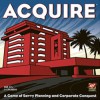




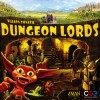





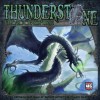


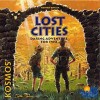









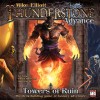



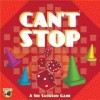




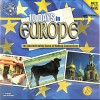

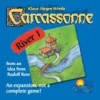
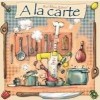


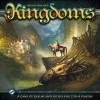


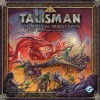
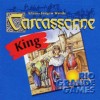


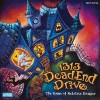
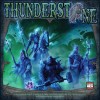
London
Review
London
Martin Wallace
Treefrog Games
We were unable to get our hands on the limited edition of London, the latest from Treefrog Games, but the new print-run has finally arrived and we have been putting the game through its paces. London appears to be famed game designer Martin Wallace’s take on the card-tableau, economic-engine games like San Juan and Race for the Galaxy—though minus the role-selection mechanism found in those two games.
The first thing that differentiates the game from the other economic-engine card games is that London has a board. The top half of the board features an attractive map of London from just after the great fire as well as a card . The game is themed around re-building the great city and trying to get rich (or at least make a profit) while doing so. The board is divided up into twenty boroughs with the River Thames pretty dividing them in half. The bottom half of the board features the card display, where cards will be placed when expended during the game.
The game play is very simple. During a players turn, he or she must decide between four possible actions:
Playing cards
Running his or her city
Buying Land
Drawing Cards
The cards in the game are mostly structures that can be built. Structures have a variety of different game effects, but mostly they allow the player to earn money, earn victory points, or discard poverty cubes (more on those later). In general cards are paid for by expending a card of the matching color from the player’s hand on to the card display. Expended cards are placed face-up and can be drawn by the other players on later turns.
When a player decides his or her city is ready, they can “run” the city. This allows them to activate any or all of the cards in the city and benefit from their effects. Most cards can only be “ran” once and must be turned face down after the phase. The player must then take poverty cubes based on the number of stacks of cards in his or her city and card in hand. Poverty cubes are worth negative VPs at the end of game and managing them is one of the major elements of the game.
That is where the board comes into play. Each time you compute the poverty cubes after running the city, you can subtract a cube for every borough you occupy in London. The borough are also worth VPs at the end of the game.
When all cards have been drawn and each player has had a final turn, the player who has acquired the least poverty cubes gets to discard all of theirs. All other players then discard the same number. The value of the remaining cubes in subtracted from the victory points earned through cards and land buys. Highest score wins.
So, the game is pretty easy to play, but is it any good? I really like it though I have some reservations. I think making expended cards available for drawing in later turns works brilliantly—making the decision of what to play and how to pay for it more interactive than it would normally be. I’ve heard the game described as multi-player solitaire, but I think this mechanism forces players to pay close attention to the opponent’s strategy and card needs.
I also like the poverty cube mechanic. I love how difficult it makes it to decide when to run your city. I love how it makes each card in hand not only a tool but also a liability. I love how absolutely brutal it is to the person who fails to manage their poverty. If you end up with over ten of the cubes, each additional one is worth a full -3 VPs, which is brutal in a game that seems to consistently feature close scores.
I do dislike the way poverty cubes are handled at the end of the game. The benefit of discarding cubes is a lot more beneficial to the players who are lagging behind than the one who was winning the poverty battle. In our last game, dropping the five cubes to match the leaders discard saved me and a second player fifteen points and her only five. It wasn’t enough to help me, but the other player who was saved the fifteen points won the game. I think I’d rather see the other players get to discard half the number of cubes of the winner, rounded down. That said, I haven’t played enough games to be sure, so I’ll be playing by the actual rules for a while still. It may turn out that I’m wrong. I’ll gladly defer to the award-winning, prolific game designer for now.
The other problem I have with the game is that the board play is pretty uninteresting. You need to buy land to get the poverty bonus and to draw cards. While, you where to build based on the cost of the land, number of victory points, and number of bonus cards, the decision was often forced on you by the game situation.
Despite these misgivings, I’m having a blast with London. It is easy to play and easy to teach but still has the aspects of Martin Wallace games that I find interesting, specifically a punishing economic system that must be carefully managed.
Score 8/10
This review with photos is available on http://www.nerdbloggers.com